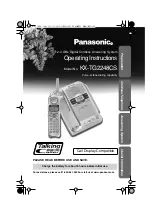
26
27
• Line up the kerf indicator with your cutting line. Position your arms and body to
resist kickback.
• To start the saw, push the lock-off button down while pulling the trigger. Allow the
motor to reach full speed before beginning cut.
• While cutting, keep the shoe flat against the workpiece and maintain a firm grip. Do
not force the saw through the workpiece. Forcing a saw can cause kickback.
• If making a partial cut, restarting in mid-cut or correcting direction, allow the blade
to come to a complete stop. To resume cutting, centre the blade in the kerf, back
the saw away from cutting edge a few inches, push the lock-off button down while
pulling the trigger and re-enter the cut slowly.
• If the saw binds and stalls, maintain a firm grip and release the trigger immediately.
Hold the saw motionless in the workpiece until the blade comes to a complete stop.
• After finishing a cut, be sure the lower guard closes and the blade comes to a
complete stop before setting the saw down.
ELECTRIC BRAKE
The electric brake engages when the trigger is released, causing the blade to stop.
Generally, the saw blade stops within two seconds. However, there may be a delay
between the time you release the trigger and when the brake engages. Occasionally
the brake may miss completely. If the brake misses frequently, the saw needs servicing
by an authorized service facility. The brake is not a substitute for the guard, and you
must always wait for the blade to stop completely before removing the saw from the
workpiece.
WORKPIECE SUPPORT
Maintain a firm grip with both hands on the saw and position your body and arm to
allow you to resist kickback if it occurs.
ALWAYS TURN OFF TOOL AND REMOVE
BATTERY BEFORE MAKING ANY ADJUSTMENTS!
Fig. R shows proper sawing position. Note that hands are kept away from cutting area.
To avoid kickback, DO support board or panel NEAR the cut (Fig. S). DON’T support
board or panel away from the cut (Fig. T).
Place the work with its “good” side—the one on which appearance is most important—
down. The saw cuts upward, so any splintering will be on the work face that is up when
you cut it.
OPER
A
TING
INS
TRUCTIONS
OPER
A
TING
INS
TRUCTIONS
(FIG. S) DO support board or panel NEAR the cut.
(FIG. T) DON’T support board or panel AWAY from the cut.
POCKET CUTTING
This may cause the saw to raise up off the work surface, which could cause injury.
A pocket cut is one that is made in a floor, wall or other flat surface.
• Adjust the saw shoe so the blade cuts at desired depth.
• Tilt the saw forward and rest front of the shoe on material to be cut.
• Using the lower blade guard retracting lever, retract the lower blade guard to an
upward position. Lower the rear of the shoe until the blade teeth almost touch the
cutting line.
• Release the lower blade guard (its contact with the work
will keep it in position to open freely as you start the cut).
Remove your hand from the lower blade guard retracting
lever and firmly grip the auxiliary handle, as shown in Fig. U.
Position your body and arm to allow you to resist kickback
if it occurs.
• Make sure blade is not in contact with cutting surface
before starting saw.
• Start the motor and gradually lower the saw until its shoe
rests flat on the material to be cut. Advance saw along the cutting line until cut is
completed.
• Release the trigger switch and allow the blade to stop completely before
withdrawing the blade from the material.
• When starting each new cut, repeat the above steps.
WARNING!
It is important to support the work properly and to hold
the saw firmly to prevent loss of control which could cause
personal injury. Fig. S illustrates proper hand support of the
saw.
model no. 054-8355-0 | contact us 1-888-670-6682
Summary of Contents for 054-8355-0
Page 1: ......




































